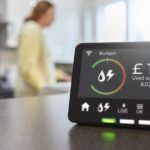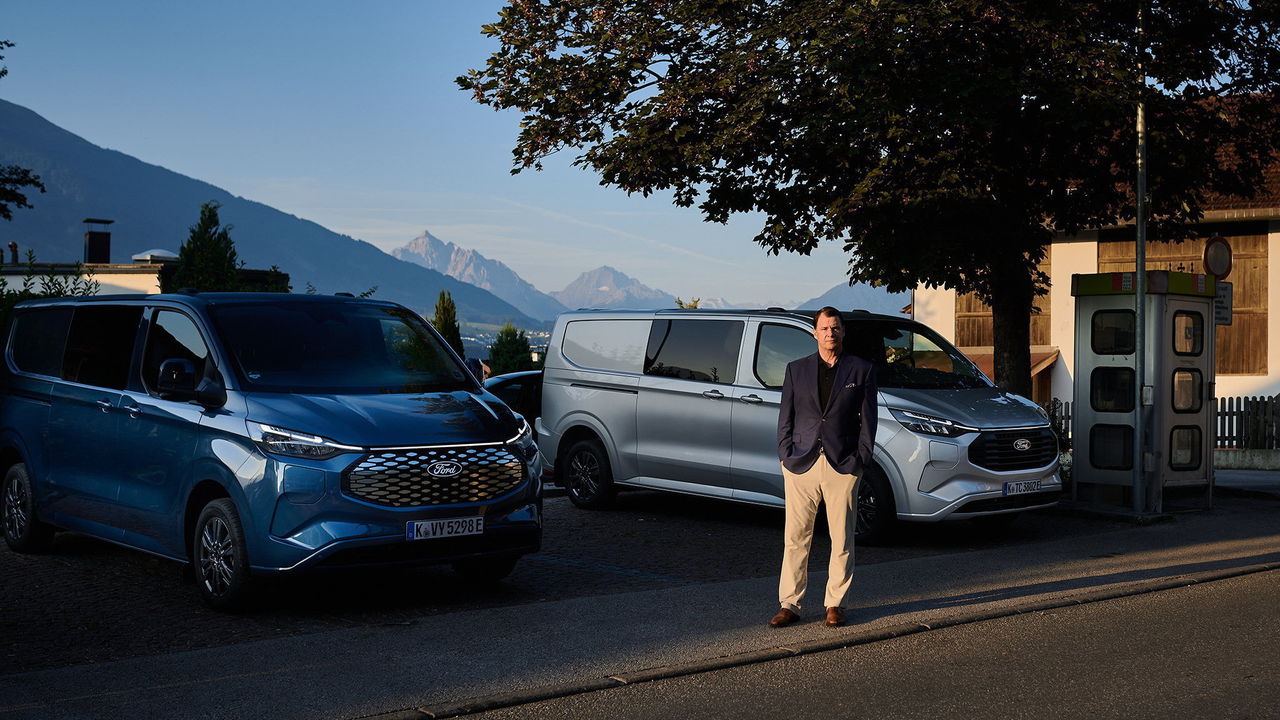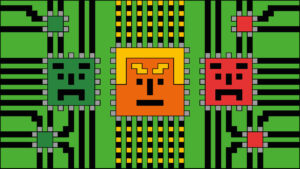
Your browser does not support the <audio> element.
It is hard to imagine a place where Jim Farley, boss of Ford, might feel more comfortable discussing his company’s future than at the wheel of one of his firm’s vehicles. Mr Farley, pictured, whose driving skills have been honed racing Ford Mustangs in his spare time, fields questions with the same assurance that he pilots a Transit van down a winding Austrian mountain road. The three-day road trip in late August, from Ford’s European headquarters in Germany to Italy, in a convoy of four Transits, was arranged by Mr Farley to assess in detail one of the firm’s best-selling vehicles as well as to meet dealers and customers along the way.
As well he might. Ford Pro, the commercial-vehicle division, is the most successful part of the company. Selling Transits and commercial versions of Ford’s pickups brought an operating profit of $5.5bn in the first half of 2024, nearly three times that of Ford Blue, the part of the firm making passenger vehicles powered by internal combustion, despite selling around half as many vehicles. Operating margins of 15.9% are far fatter than Blue’s 4.3%, and on a level with what Porsche makes selling pricey sports cars.
Yet Mr Farley insists that Ford Pro’s contribution is about far more than profits. The “super users” who purchase commercial vehicles are “the most important customers that signal the future capability of the company”. Commercial vehicles are a vital signpost both for electrification and the software that will increasingly matter to car buyers.
Commercial buyers, who care most about “dollars and cents”, currently have a far greater appetite for software than retail customers. Digital tools that can process real-time data from the vehicles ensure that drivers using battery power plug in at the right times, or predict when maintenance is needed. Because the buyer and user of the vehicle are often different, monitoring drivers and coaching those who are too hard on brakes or accelerate too quickly can save companies money.
Remote monitoring also helps with “uptime”. In a darkened room at Ford’s Technical Centre, the global home of research and development for the Transit located in Dunton, around 30 miles (50km) from London, a wall-mounted screen measuring nine metres by two resembles what might be required for a military strike or a space mission. It is alive with real-time data monitoring vehicle health to ensure that the right maintenance is done speedily by dealers, so vehicles are out of service for the shortest time possible. There are now four more such operations rooms located across Europe.
The benefits are clear. Services enabled by software now make up 15% of profits at Pro, and should rise to 20% by 2026. Mr Farley claims Ford is five years ahead of rivals in this respect and that it is also a useful test bed for similar services for retail customers in the future. He notes that dedicated telematics companies, which do similar monitoring jobs, cannot directly control speeding because they do not own the vehicles. He can, and this is a service that worried parents might purchase to tame young drivers.
Electrification is also speeding ahead for Ford’s commercial customers who are “not scared to pay a little more upfront” for pricier evs. Usage data also allows Ford to advise customers on which parts of their fleet might be better served with full electric or hybrid vehicles. A one-stop shop for busy smaller fleet owners gives an all-in cost including charging and servicing. But Mr Farley is also prepared to learn about other reasons for going electric. An Austrian baker encountered en route noted that he was turning his fleet of Fords to battery power because the mountain roads around Innsbruck eat through brakes on his fossil-fuel powered Transits, but do far better with the regenerative system on evs.
Ford’s commercial arm may be speeding ahead, but the company still needs to make smaller and cheaper evs to attract mainstream drivers and turn a profit. Its ev division is set to lose up to $5.5bn this year. Ford is betting on “commercial and small” says Mr Farley. Rather than follow competitors which have struck deals with Chinese carmakers for software and ev know-how, Ford is relying on a “skunkworks” to make affordable vehicles that are “fully competitive” with the likes of China’s byd, a maker of low-cost evs, by designing more efficient electric components in-house and using cheaper battery chemistry.
The next generation of software-stuffed electric vehicles emerging from the skunkworks will start with a smaller electric pickup, followed by a van and large pickup trucks over the next two or three years. This is where Ford has a competitive advantage. More to the point, Mr Farley thinks that in ten years’ time all car buyers will want the same sort of vehicles, software and services as the baker and other customers he met on his trip. And all roads, he hopes, will lead to Ford.■
To stay on top of the biggest stories in business and technology, sign up to the Bottom Line, our weekly subscriber-only newsletter.



















